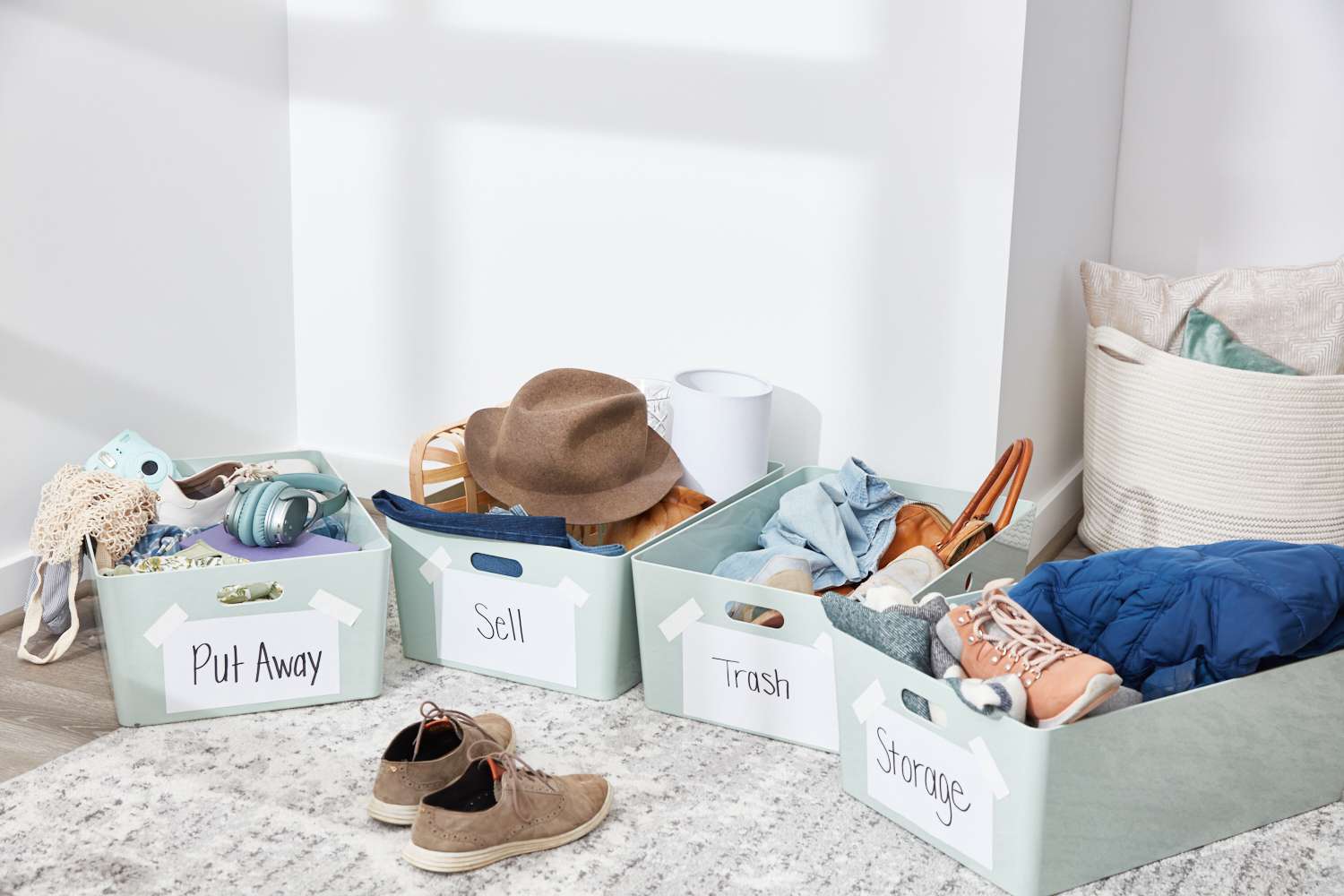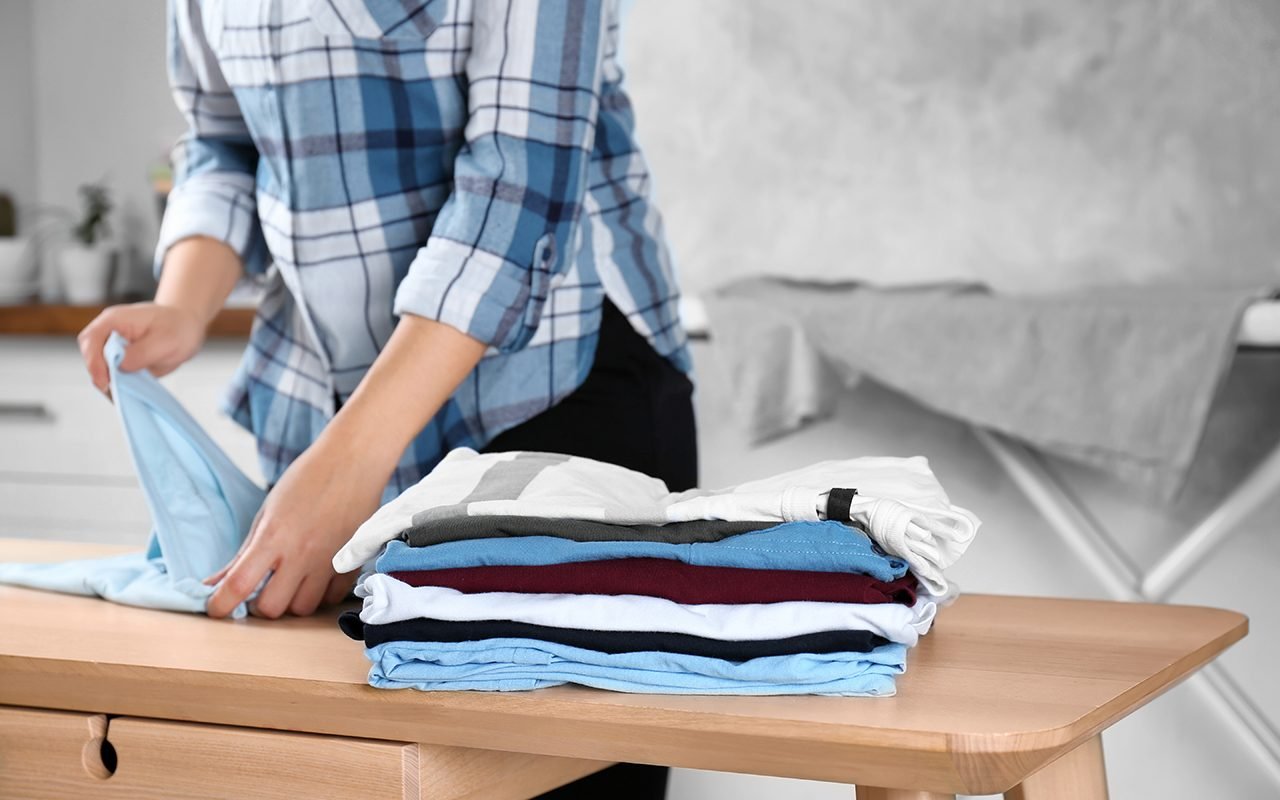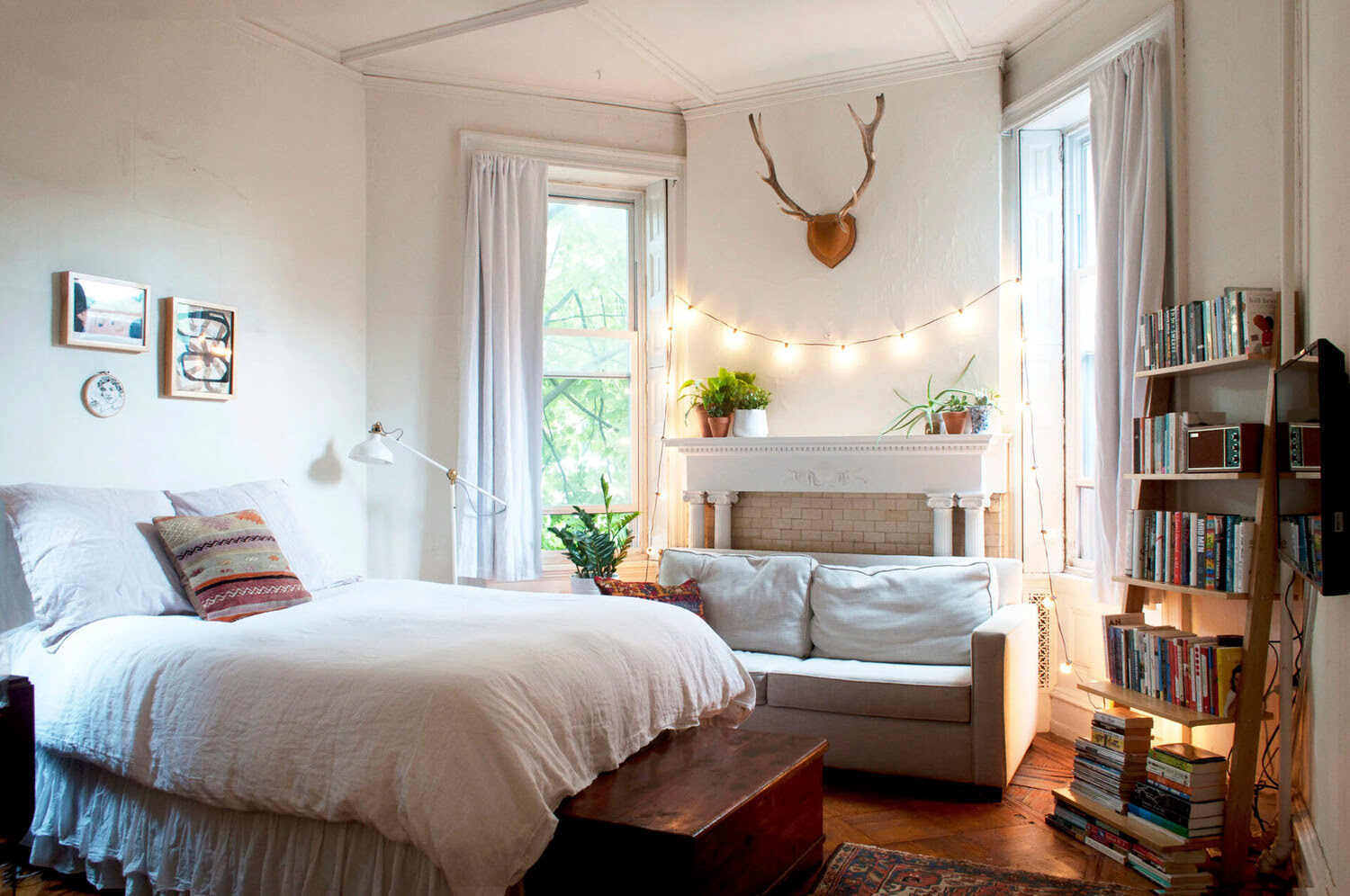Home>Interior Design>I Tried My Mom’s Easy 4-Step Decluttering Technique And It Finally Got Me Over My Clothes Hoarding Habit


Interior Design
I Tried My Mom’s Easy 4-Step Decluttering Technique And It Finally Got Me Over My Clothes Hoarding Habit
Modified: December 7, 2023
Discover a simple 4-step decluttering technique that helped me conquer my clothes-hoarding habit. Transform your interior design with this easy method.
(Many of the links in this article redirect to a specific reviewed product. Your purchase of these products through affiliate links helps to generate commission for Storables.com, at no extra cost. Learn more)
Introduction
Are you guilty of holding onto clothes that you no longer wear? Do you find it difficult to part ways with your beloved clothing items, even if they haven’t seen the light of day in years? If so, you may be dealing with the common problem of clothes hoarding.
Hoarding clothes can be a result of various factors, such as sentimental value, attachment to the past, or the fear of missing out on future fashion trends. Whatever the reason, this habit can lead to a cluttered and chaotic living space, making it difficult to find the clothes you actually wear and enjoy.
Fortunately, there is a solution. I recently stumbled upon my mom’s easy 4-step decluttering technique that helped me finally break free from my clothes-hoarding habit. It not only cleared up physical space in my wardrobe but also brought a sense of peace and clarity to my mind.
In this article, I will walk you through each step of this simple yet effective technique, providing insights and tips along the way. By the end of this journey, you’ll have the tools and motivation to conquer your own clothes-hoarding tendencies and create a more organized and streamlined wardrobe.
Are you ready to liberate yourself from the weight of excessive clothes? Let’s get started!
Key Takeaways:
- Understanding the emotional reasons behind clothes hoarding is crucial for successful decluttering. Self-reflection, acceptance, and challenging limiting beliefs pave the way for a transformative wardrobe overhaul.
- The 4-step decluttering technique not only liberates your wardrobe but also fosters a mindful and intentional approach to clothing. Letting go of excess and maintaining an organized wardrobe brings clarity and joy.
Understanding the Clothes-Hoarding Habit
Before diving into the decluttering process, it’s important to understand the underlying reasons behind our clothes-hoarding habits. While each individual’s situation may vary, there are common factors that contribute to this behavior.
Firstly, sentimental attachment plays a significant role. We often hold onto clothes that hold sentimental value, reminding us of special occasions, memorable experiences, or loved ones. Letting go of these items can feel like parting with cherished memories.
Secondly, the fear of regret can drive our clothes-hoarding habits. We worry that if we get rid of a particular item, we may need it in the future or regret our decision later. This mindset leads us to hold onto clothes we rarely wear or don’t even like.
Thirdly, clothes-hoarding can stem from the emotional attachment to our self-image. We may have a perception of ourselves based on certain clothes, clinging to the hope that we will fit into them again or that they represent a desired version of ourselves.
Finally, societal influences and consumerism can contribute to our clothes-hoarding habits. The continuous influx of fashion trends and the pressure to constantly update our wardrobes can lead to an accumulation of clothes that we don’t truly need or wear.
Understanding these underlying reasons is crucial because it allows us to approach the decluttering process with empathy and self-awareness. By recognizing why we hoard clothes, we can address these emotional attachments and beliefs to facilitate a successful decluttering journey.
In the next steps, we will explore my mom’s four-step approach, which combines practicality and emotional intelligence, to help you conquer your clothes-hoarding habit once and for all.
Step 1: Acceptance and Self-Reflection
The first step in breaking free from your clothes-hoarding habit is to accept that it exists and engage in self-reflection. It’s essential to acknowledge that you have a problem with holding onto clothes and recognize the impact it has on your life.
Take a moment to reflect on why you hoard clothes. Is it due to sentimental attachment, fear of regret, or other underlying emotions? Be honest with yourself and dig deep to uncover the root causes of your attachment to clothing.
Ask yourself probing questions, such as:
- What emotions do I associate with these clothes?
- Why do I find it difficult to let go of them?
- How do these clothes make me feel about myself?
By delving into these questions, you gain valuable insights into your relationship with your clothes. This self-reflection allows you to develop a greater understanding of why you’ve been holding onto them and prepares you for the next steps in the decluttering process.
During this self-reflection, it’s helpful to challenge any limiting beliefs you may have about your clothes. For example, if you believe that you need a massive wardrobe to be fashionable or that your worth is tied to your clothes, remind yourself that these beliefs are not true.
Additionally, practice self-compassion as you navigate this process. Be kind to yourself and acknowledge that breaking this habit takes time and effort. Celebrate your progress and be patient with yourself if there are moments of resistance or difficulty.
Remember, acceptance and self-reflection are critical first steps in any journey towards change. By embracing these steps, you pave the way for a successful and transformative decluttering experience.
Step 2: Sorting and Categorizing
Now that you have accepted and reflected on your clothes-hoarding habit, it’s time to tackle the next step: sorting and categorizing your clothing items.
To begin, clear out a designated space, such as your bed or a large table, where you can spread out and assess your clothes. Take out all of your clothing items from your wardrobe, drawers, and anywhere else they may be stored.
Next, create categories that make sense to you. This can include categories like tops, bottoms, dresses, outerwear, and accessories. Adjust the categories based on your personal style and the types of clothing you own.
As you sort through each item, ask yourself some critical questions:
- Do I love this item?
- Does it fit me well?
- Have I worn it in the last year?
- Does it align with my style and current lifestyle?
Be honest with yourself during this process. If an item doesn’t bring you joy or serve a purpose in your life, it may be time to let it go.
When faced with difficult decisions, consider creating a “maybe” pile. Place items that you’re unsure about in this pile and revisit it later in the decluttering process. Often, with a fresh perspective, it becomes easier to make decisions about items that initially seemed challenging to let go.
As you sort through your clothes, it can be helpful to have separate piles for items you want to keep, donate, sell, or discard. This way, you create clear boundaries and avoid mixing items back into your wardrobe that you no longer want or need.
Remember, the goal of this step is to evaluate each item and determine its place in your life. By categorizing and sorting your clothes, you gain a clearer understanding of the contents of your wardrobe and create a solid foundation for the next steps in the decluttering process.
When decluttering your clothes, start by sorting them into categories (tops, bottoms, etc.), then decide which items to keep, donate, or discard. Finally, organize the remaining items in a way that makes them easily accessible.
Step 3: Letting Go of Excess
Now that you have sorted and categorized your clothing items, it’s time for the pivotal step of letting go of excess. This step can be both liberating and challenging, as it requires making tough decisions about what items to keep and what items to part ways with.
First, revisit the “maybe” pile that you set aside during the sorting process. Take another look at each item and ask yourself if it truly brings you joy, aligns with your current style, and serves a purpose in your life. Be ruthless in your evaluation.
Consider the following strategies to help you let go of excess:
- Embrace the one-year rule: If you haven’t worn an item in the last year, chances are you won’t wear it in the future. Let go of items that no longer resonate with you or your current lifestyle.
- Create a capsule wardrobe: Curate a collection of versatile, high-quality items that can be mixed and matched to create various outfits. Let go of items that don’t align with your capsule wardrobe vision.
- Consider the impact: Think about the environmental and social impact of keeping excess clothes. Donate or sell items that are in good condition so that someone else can enjoy them, or recycle them responsibly.
- Focus on the present: Let go of clothes that represent past versions of yourself. Embrace who you are now and choose items that reflect your current style and aspirations.
While it can be challenging to part with certain items, remind yourself of the benefits that come with decluttering. A more streamlined wardrobe makes it easier to find and enjoy the clothes you truly love, saves time and energy in getting ready, and creates space for new experiences and opportunities.
As you say goodbye to each item, take a moment to express gratitude. Acknowledge the role it played in your life and the lessons it taught you. This act of gratitude can help ease the emotional attachment and make it easier to let go.
Once you have identified the items you no longer want, distribute them accordingly. Donate to a charitable organization, sell them online or at a local consignment store, or recycle them responsibly.
Remember, letting go of excess is an essential step towards creating a more intentional and clutter-free lifestyle. Embrace the process and trust that you are making room for greater things in your life.
Step 4: Organizing and Maintaining
After successfully letting go of excess clothing, it’s time to focus on organizing and maintaining your newly curated wardrobe. This step ensures that you can easily find and enjoy your clothes while preventing future clothes-hoarding tendencies.
Here are some practical tips for organizing and maintaining your wardrobe:
- Invest in quality storage solutions: Consider purchasing hangers, drawer dividers, and storage bins that fit your available space and help keep your clothes organized. Opt for clear bins or labels to easily identify the contents.
- Create a functional layout: Arrange your clothes in a way that makes sense to you. You may choose to organize by color, season, or clothing type. Find a system that works for you and makes it easy to locate specific items.
- Adopt a “one in, one out” policy: Whenever you buy a new clothing item, commit to removing an existing item from your wardrobe. This practice helps prevent accumulation and encourages mindful purchases.
- Frequent decluttering sessions: Schedule regular decluttering sessions to reassess your wardrobe. Set aside time every few months to evaluate your clothes and identify items that no longer serve you. This proactive approach ensures that your wardrobe remains clutter-free.
- Consolidate seasonal items: Store out-of-season clothes in labeled containers or vacuum-sealed bags to maximize space in your wardrobe and keep it organized.
- Practice mindful shopping: Before purchasing new clothes, ask yourself if the item aligns with your style, fits well, and serves a purpose in your wardrobe. Avoid impulse purchases and focus on quality over quantity.
Maintaining an organized wardrobe requires consistency and discipline. Stay committed to the process and regularly assess the items in your wardrobe to ensure that everything aligns with your personal style and needs.
Remember, organizing your wardrobe is an ongoing process. As your style evolves and your lifestyle changes, you may need to make adjustments to your organization system. Embrace the journey of creating a wardrobe that reflects your authentic self.
By following these organizing and maintenance practices, you will ensure that your newfound clutter-free wardrobe remains a source of joy and facilitates a more intentional and simplified approach to dressing each day.
Conclusion
Congratulations! You have successfully completed the four-step decluttering technique for overcoming your clothes-hoarding habit. By accepting, reflecting, sorting, letting go, and organizing, you have transformed your wardrobe into a space that brings you joy and simplicity.
Throughout this process, you may have experienced a range of emotions, from sentimental attachment to the satisfaction of creating a clutter-free environment. Remember that change takes time, and it’s normal to feel a mix of emotions as you let go of old habits and make room for new ones.
By understanding the underlying causes of your clothes-hoarding habit and implementing the steps outlined in this technique, you have gained valuable insights into your relationship with clothing and developed a more mindful and intentional approach to your wardrobe.
As you move forward, continue to practice self-awareness and self-compassion. If you find yourself slipping back into old habits, remind yourself of the freedom and clarity that decluttering has brought you. Stay committed to regular maintenance and periodic reassessments of your wardrobe.
Remember that a clutter-free wardrobe is not an end goal, but an ongoing journey. Embrace the evolution of your personal style and lifestyle, and allow your wardrobe to reflect and support who you are in the present moment.
Finally, extend the benefits of decluttering beyond your wardrobe. Apply the principles of this technique to other areas of your life, such as your home, digital spaces, and even relationships. Embrace the freedom that comes with letting go of excess and creating a more intentional and simplified life.
Now, go forth and enjoy the newfound space, clarity, and joy that a decluttered wardrobe brings. Embrace the power of simplicity, and let your clothing choices reflect your authentic self.
You’ve got this!
Frequently Asked Questions about I Tried My Mom's Easy 4-Step Decluttering Technique And It Finally Got Me Over My Clothes Hoarding Habit
Was this page helpful?
At Storables.com, we guarantee accurate and reliable information. Our content, validated by Expert Board Contributors, is crafted following stringent Editorial Policies. We're committed to providing you with well-researched, expert-backed insights for all your informational needs.



0 thoughts on “I Tried My Mom’s Easy 4-Step Decluttering Technique And It Finally Got Me Over My Clothes Hoarding Habit”